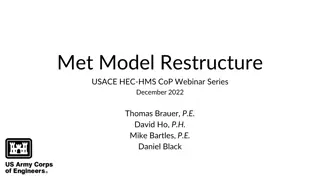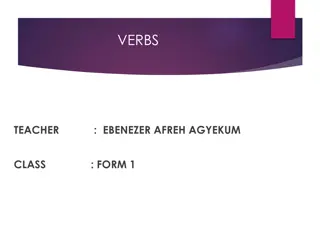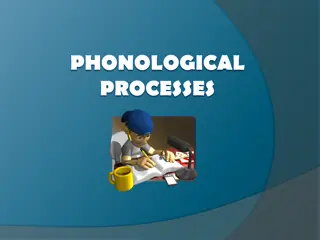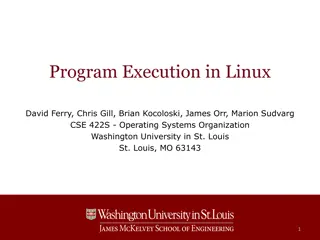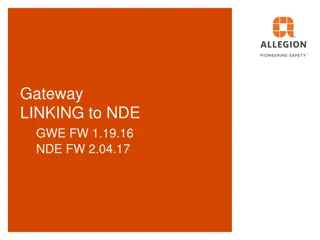
Understanding Carnegie Mellon Computer Systems
Delve into the concepts of computer systems at Carnegie Mellon University, covering topics such as linking programs, compilers, and linkers. Explore the importance of modular programming and the efficiency benefits of separate compilation and dynamic linking. Dive into symbol resolution and more in this comprehensive overview.
Download Presentation

Please find below an Image/Link to download the presentation.
The content on the website is provided AS IS for your information and personal use only. It may not be sold, licensed, or shared on other websites without obtaining consent from the author. If you encounter any issues during the download, it is possible that the publisher has removed the file from their server.
You are allowed to download the files provided on this website for personal or commercial use, subject to the condition that they are used lawfully. All files are the property of their respective owners.
The content on the website is provided AS IS for your information and personal use only. It may not be sold, licensed, or shared on other websites without obtaining consent from the author.
E N D
Presentation Transcript
Carnegie Mellon Linking 15-213/15-513: Introduction to Computer Systems 16thLecture, Oct 24, 2024 Instructors: Brian Railing Mohamed Farag 1 Bryant and O Hallaron, Computer Systems: A Programmer s Perspective, Third Edition
Carnegie Mellon Today Linking Motivation What it does How it works Activity 2 Bryant and O Hallaron, Computer Systems: A Programmer s Perspective, Third Edition
Carnegie Mellon Example C Program int sum(int *a, int n); int sum(int *a, int n) { int i, s = 0; int array[2] = {1, 2}; int main(int argc, char** argv) { int val = sum(array, 2); return val; } for (i = 0; i < n; i++) { s += a[i]; } return s; } sum.c main.c 3 Bryant and O Hallaron, Computer Systems: A Programmer s Perspective, Third Edition
Carnegie Mellon Linking Programs are translated and linked using a compiler driver: linux> gcc -Og -o prog main.c sum.c linux> ./prog main.c sum.c Source files Translators (cpp, cc1, as) Translators (cpp, cc1, as) Separately compiled relocatable object files main.o sum.o Linker (ld) Fully linked executable object file (contains code and data for all functions defined in main.c and sum.c) prog 4 Bryant and O Hallaron, Computer Systems: A Programmer s Perspective, Third Edition
Carnegie Mellon Why Linkers? Reason 1: Modularity Program can be written as a collection of smaller source files, rather than one monolithic mass. Can build libraries of common functions e.g., Math library, standard C library Header files in C declare types that are defined in libraries 5 Bryant and O Hallaron, Computer Systems: A Programmer s Perspective, Third Edition
Carnegie Mellon Why Linkers? (cont) Reason 2: Efficiency Time: Separate compilation Change one source file, compile, and then relink. No need to recompile other source files. Can compile multiple files concurrently. Space: Libraries Common functions can be aggregated into a single file... Option 1: Static Linking Executable files and running memory images contain only the library code they actually use Option 2: Dynamic linking Executable files contain no library code During execution, single copy of library code can be shared across all executing processes 6 Bryant and O Hallaron, Computer Systems: A Programmer s Perspective, Third Edition
Carnegie Mellon What Do Linkers Do? Step 1: Symbol resolution Programs define and reference symbols (global variables and functions): void swap() { } /* define symbol swap */ swap(); /* reference symbol swap */ int *xp = &x; /* define symbol xp, reference x */ Symbol definitions are stored in object file (by assembler) in symbol table. Symbol table is an array of entries Each entry includes name, size, and location of symbol. During symbol resolution step, the linker associates each symbol reference with exactly one symbol definition. 7 Bryant and O Hallaron, Computer Systems: A Programmer s Perspective, Third Edition
Carnegie Mellon Symbols in Example C Program Definitions int sum(int *a, int n); int sum(int *a, int n) { int i, s = 0; int array[2] = {1, 2}; int main(int argc, char** argv) { int val = sum(array, 2); return val; } for (i = 0; i < n; i++) { s += a[i]; } return s; } sum.c main.c Reference 8 Bryant and O Hallaron, Computer Systems: A Programmer s Perspective, Third Edition
Carnegie Mellon What Do Linkers Do? (cont d) Step 2: Relocation Merges separate code and data sections into single sections Relocates symbols from their relative locations in the .o files to their final absolute memory locations in the executable. Updates all references to these symbols to reflect their new positions. Let s look at these two steps in more detail . 9 Bryant and O Hallaron, Computer Systems: A Programmer s Perspective, Third Edition
Carnegie Mellon Three Kinds of Object Files (Modules) Relocatable object file (.o file) Contains code and data in a form that can be combined with other relocatable object files to form executable object file. Each .o file is produced from exactly one source (.c) file Executable object file (a.out file) Contains code and data in a form that can be copied directly into memory and then executed. Shared object file (.so file) Special type of relocatable object file that can be loaded into memory and linked dynamically, at either load time or run-time. Called Dynamic Link Libraries (DLLs) by Windows 10 Bryant and O Hallaron, Computer Systems: A Programmer s Perspective, Third Edition
Carnegie Mellon Executable and Linkable Format (ELF) Standard binary format for object files One unified format for Relocatable object files (.o), Executable object files (a.out) Shared object files (.so) Generic name: ELF binaries 11 Bryant and O Hallaron, Computer Systems: A Programmer s Perspective, Third Edition
Carnegie Mellon ELF Object File Format Elf header Word size, byte ordering, file type (.o, exec, .so), machine type, etc. 0 ELF header Segment header table Page size, virtual address memory segments (sections), segment sizes. Segment header table (required for executables) .text section .text section Code .rodata section .data section .rodata section Read only data: jump tables, string constants, ... .bss section .symtab section .data section Initialized global variables .rel.txt section .rel.data section .bss section Uninitialized global variables Block Started by Symbol Better Save Space Has section header but occupies no space .debug section Section header table 12 Bryant and O Hallaron, Computer Systems: A Programmer s Perspective, Third Edition
Carnegie Mellon ELF Object File Format (cont.) .symtab section Symbol table Procedure and static variable names Section names and locations 0 ELF header Segment header table (required for executables) .rel.text section Relocation info for .textsection Addresses of instructions that will need to be modified in the executable Instructions for modifying .text section .rodata section .data section .bss section .rel.data section Relocation info for .datasection Addresses of pointer data that will need to be modified in the merged executable .symtab section .rel.txt section .rel.data section .debug section Info for symbolic debugging (gcc -g) .debug section Section header table Section header table Offsets and sizes of each section 13 Bryant and O Hallaron, Computer Systems: A Programmer s Perspective, Third Edition
Carnegie Mellon Linker Symbols Global symbols Symbols defined by module m that can be referenced by other modules. e.g., non-static C functions and non-static global variables. External symbols Global symbols that are referenced by module m but defined by some other module. Local symbols Symbols that are defined and referenced exclusively by module m. e.g, C functions and global variables defined with the staticattribute. Local linker symbols are not local program variables 14 Bryant and O Hallaron, Computer Systems: A Programmer s Perspective, Third Edition
Carnegie Mellon Step 1: Symbol Resolution Referencing a global that s defined here int sum(int *a, int n); int sum(int *a, int n) { int i, s = 0; int array[2] = {1, 2}; int main(int argc,char **argv) { int val = sum(array, 2); return val; } for (i = 0; i < n; i++) { s += a[i]; } return s; } sum.c main.c Defining a global Linker knows nothing of i or s Referencing a global Linker knows nothing of val that s defined here 15 Bryant and O Hallaron, Computer Systems: A Programmer s Perspective, Third Edition
Carnegie Mellon Symbol Identification Which of the following names will be in the symbol table of symbols.o? Names: incr foo a argc argv b main printf Others? "%d\n" incr foo a argc argv b main printf symbols.c: int incr = 1; static int foo(int a) { int b = a + incr; return b; } int main(int argc, char* argv[]) { printf("%d\n", foo(5)); return 0; } Can find this with readelf: linux> readelf s symbols.o 16 Bryant and O Hallaron, Computer Systems: A Programmer s Perspective, Third Edition
Carnegie Mellon Local Symbols Local non-static C variables vs. local static C variables Local non-static C variables: stored on the stack Local static C variables: stored in either .bss or .data static int x = 15; int f() { static int x = 17; return x++; } Compiler allocates space in .data for each definition of x Creates local symbols in the symbol table with unique names, e.g., x, x.1721 and x.1724. int g() { static int x = 19; return x += 14; } int h() { return x += 27; } Bryant and O Hallaron, Computer Systems: A Programmer s Perspective, Third Edition static-local.c 17
Carnegie Mellon How Linker Resolves Duplicate Symbol Definitions Program symbols are either strong or weak Strong: procedures and initialized globals Weak: uninitialized globals Or ones declared with specifier extern p1.c p2.c int foo=5; int foo; weak strong p1() { } p2() { } strong strong 18 Bryant and O Hallaron, Computer Systems: A Programmer s Perspective, Third Edition
Carnegie Mellon Linker s Symbol Rules Rule 1: Multiple strong symbols are not allowed Each item can be defined only once Otherwise: Linker error Rule 2: Given a strong symbol and multiple weak symbols, choose the strong symbol References to the weak symbol resolve to the strong symbol Rule 3: If there are multiple weak symbols, pick an arbitrary one Can override this with gcc fno-common Puzzles on the next slide 19 Bryant and O Hallaron, Computer Systems: A Programmer s Perspective, Third Edition
Carnegie Mellon Linker Puzzles int x; p1() {} Link time error: two strong symbols (p1) p1() {} int x; p1() {} int x; p2() {} References to x will refer to the same uninitialized int. Is this what you really want? int x; int y; p1() {} double x; p2() {} Writes to x in p2 might overwrite y! Evil! int x=7; int y=5; p1() {} double x; p2() {} Writes to x in p2 might overwrite y! Nasty! References to x will refer to the same initialized variable. int x=7; p1() {} int x; p2() {} Important: Linker does not do type checking. 20 Bryant and O Hallaron, Computer Systems: A Programmer s Perspective, Third Edition
Carnegie Mellon Type Mismatch Example long int x; /* Weak symbol */ /* Global strong symbol */ /* Global strong symbol */ double x = 3.14; double x = 3.14; int main(int argc, char *argv[]) { printf("%ld\n", x); return 0; } mismatch-variable.c mismatch-main.c Compiles without any errors or warnings What gets printed? 21 Bryant and O Hallaron, Computer Systems: A Programmer s Perspective, Third Edition
Carnegie Mellon Global Variables Avoid if you can Otherwise Use static if you can Initialize if you define a global variable Use extern if you reference an external global variable Treated as weak symbol But also causes linker error if not defined in some file 22 Bryant and O Hallaron, Computer Systems: A Programmer s Perspective, Third Edition
Carnegie Mellon Use of extern in .h Files (#1) c1.c global.h extern int g; int f(); #include "global.h" int f() { return g+1; } c2.c #include <stdio.h> #include "global.h int g = 0; int main(int argc, char argv[]) { int t = f(); printf("Calling f yields %d\n", t); return 0; } 23 Bryant and O Hallaron, Computer Systems: A Programmer s Perspective, Third Edition
Carnegie Mellon Linking Example int sum(int *a, int n); int sum(int *a, int n) { int i, s = 0; int array[2] = {1, 2}; int main(int argc,char **argv) { int val = sum(array, 2); return val; } for (i = 0; i < n; i++) { s += a[i]; } return s; } sum.c main.c 25 Bryant and O Hallaron, Computer Systems: A Programmer s Perspective, Third Edition
Carnegie Mellon Step 2: Relocation Relocatable Object Files Executable Object File .text .data 0 System code Headers System data System code main() .text main.o sum() .text main() .data More system code int array[2]={1,2} System data .data sum.o int array[2]={1,2} .text sum() .symtab .debug 26 Bryant and O Hallaron, Computer Systems: A Programmer s Perspective, Third Edition
Carnegie Mellon Relocation Entries int array[2] = {1, 2}; int main(int argc, char** argv) { int val = sum(array, 2); return val; } main.c 0000000000000000 <main>: 0: 48 83 ec 08 sub $0x8,%rsp 4: be 02 00 00 00 mov $0x2,%esi 9: bf 00 00 00 00 mov $0x0,%edi # %edi = &array a: R_X86_64_32 array # Relocation entry e: e8 00 00 00 00 callq 13 <main+0x13> # sum() f: R_X86_64_PC32 sum-0x4 # Relocation entry 13: 48 83 c4 08 add $0x8,%rsp 17: c3 retq main.o Source: objdump r d main.o 27 Bryant and O Hallaron, Computer Systems: A Programmer s Perspective, Third Edition
Carnegie Mellon Relocated .text section 00000000004004d0 <main>: 4004d0: 48 83 ec 08 sub $0x8,%rsp 4004d4: be 02 00 00 00 mov $0x2,%esi 4004d9: bf 18 10 60 00 mov 4004de: e8 05 00 00 00 callq 4004e8 <sum> # sum() 4004e3: 48 83 c4 08 add $0x8,%rsp 4004e7: c3 retq $0x601018,%edi # %edi = &array 00000000004004e8 <sum>: 4004e8: b8 00 00 00 00 mov 4004ed: ba 00 00 00 00 mov 4004f2: eb 09 jmp 4004f4: 48 63 ca movslq %edx,%rcx 4004f7: 03 04 8f add (%rdi,%rcx,4),%eax 4004fa: 83 c2 01 add $0x1,%edx 4004fd: 39 f2 cmp 4004ff: 7c f3 jl 400501: f3 c3 repz retq $0x0,%eax $0x0,%edx 4004fd <sum+0x15> %esi,%edx 4004f4 <sum+0xc> callq instruction uses PC-relative addressing for sum(): 0x4004e8 = 0x4004e3 + 0x5 Source: objdump -d prog 28 Bryant and O Hallaron, Computer Systems: A Programmer s Perspective, Third Edition
Carnegie Mellon Loading Executable Object Files Memory invisible to user code Executable Object File Kernel virtual memory 0 ELF header User stack (created at runtime) Program header table (required for executables) %rsp (stack pointer) .init section .text section Memory-mapped region for shared libraries .rodata section .data section .bss section brk Run-time heap (created by malloc) .symtab .debug Loaded from the executable file Read/write data segment (.data, .bss) .line .strtab Read-only code segment (.init, .text, .rodata) Section header table (required for relocatables) 0x400000 Unused 0 29 Bryant and O Hallaron, Computer Systems: A Programmer s Perspective, Third Edition
Carnegie Mellon Quiz https://canvas.cmu.edu/courses/42532/quizzes/127200 30 Bryant and O Hallaron, Computer Systems: A Programmer s Perspective, Third Edition
Carnegie Mellon Activity Get the activity Go to Canvas Assignments Or here is a direct link: https://www.cs.cmu.edu/~213/activities/linking.pdf Form groups of 2 One person runs the activity on a shark machine The other person fills in the answers 31 Bryant and O Hallaron, Computer Systems: A Programmer s Perspective, Third Edition
Carnegie Mellon Linking Recap Usually: Just happens, no big deal Sometimes: Strange errors 32 Bryant and O Hallaron, Computer Systems: A Programmer s Perspective, Third Edition

![Read⚡ebook✔[PDF] Linking the Space Shuttle and Space Stations: Early Docking Te](/thumb/21519/read-ebook-pdf-linking-the-space-shuttle-and-space-stations-early-docking-te.jpg)





